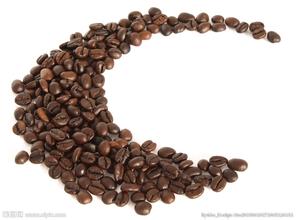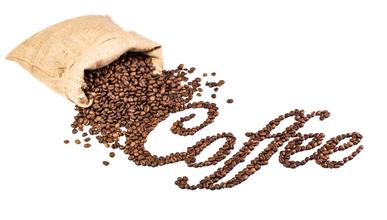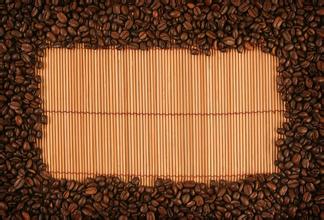How many coffee producing areas are there in Kenya? how big is its acreage? what is the export price?
How many coffee producing areas are there in Kenya? how big is its acreage? what is the export price?
The coffee producing areas in Kenya are mainly concentrated in Mount Kenya (Mt. The plateau region represented by Kenya). Tropical climate, acid red volcanic soil provides a natural and suitable growth environment for coffee. Major producing areas such as Nyeri and Ruiru in central China
Like the choice of other coffee producing countries, although SL-28 and SL-34 have stood the test of time and cultivated generation after generation of faithful pumps for Kenyan coffee, the Kenyan government and the Coffee Research Institute (Coffee Research Foundation) have begun to promote a new variety, Ruiri 11, for the sake of coffee yield and disease resistance. The promoters assure coffee lovers that the new variety still has the classic flavor of Kenyan coffee. However, the continuous efforts did not win the recognition of coffee gluttons, who agreed that the taste of the new variety was lacking, and the prospect of Ruiru11 remains to be seen.
In alpine areas, due to the cold climate and slow growth rate of coffee, the density of raw beans is higher and the texture is harder, and the more mellow and aromatic the coffee is, and it has a supple sour taste; on the contrary, the density of raw beans is smaller and the texture is less hard, then the quality of coffee is poorer, so some people classify it as "hardness". This classification method can be divided into the following categories: extremely hard beans, height is about 4500 to 5000 feet, referred to as SHB; high hard beans, height is about 3000 to 4500 feet, referred to as GHB; hard beans, height is about 2000 to 3000 feet, referred to as HB; Pacific coastal area, height is about 984 to 3280 feet, referred to as Pacific.
Kenyan natives were created by Scott Laboratories in 1930, referred to as SL for short. Agronomists wanted to find a kind of bourbon with high yield and resistance to diseases and insect pests, and obtained SL28 through experiments. SL28 is a genetic variant with a mixed pedigree of French missionaries, mochas and Yementibica. The original goal of breeding SL28 was to mass-produce coffee beans with high quality and resistance to diseases and insect pests. Although the output of SL28 was not as large as expected, the copper leaf color and broad bean-shaped beans had a great sweet feeling.

Important Notice :
前街咖啡 FrontStreet Coffee has moved to new addredd:
FrontStreet Coffee Address: 315,Donghua East Road,GuangZhou
Tel:020 38364473
- Prev

A detailed introduction to the manor of the growing area of Brazilian Minas Coffee
The Flavor characteristic Price of Brazilian Minas Coffee A detailed introduction to the growing area of Brazilian Minas Coffee Coffee beans are treated with pulped natural and dried in the sun, that is, the coffee is mechanically peeled, leaving the seeds and pulp of the coffee, and then sun-dried. The harvest season is from March to June every year, and this batch of beans is the latest batch of beans. This bean is from Minah, Brazil.
- Next

Flavor description of Yejia Coffee Cochel washed Coffee beans A brief introduction to the area of planting Environment
Kochere Cochrane is located in the southwest of Ethiopia, about 25 miles to the north, that is, the famous Yega Chefen. The production model is mainly based on the local small rice to send the batches to the cooperative for unified processing. There are about 100,000 people in the village of Chalalacktu who eat coffee for a living, and related production activities have become their main source of economy. Due to the income from coffee production, the standard of living in the land is similar.
Related
- Detailed explanation of Jadeite planting Land in Panamanian Jadeite Manor introduction to the grading system of Jadeite competitive bidding, Red bid, Green bid and Rose Summer
- Story of Coffee planting in Brenka region of Costa Rica Stonehenge Manor anaerobic heavy honey treatment of flavor mouth
- What's on the barrel of Blue Mountain Coffee beans?
- Can American coffee also pull flowers? How to use hot American style to pull out a good-looking pattern?
- Can you make a cold extract with coffee beans? What is the right proportion for cold-extracted coffee formula?
- Indonesian PWN Gold Mandrine Coffee Origin Features Flavor How to Chong? Mandolin coffee is American.
- A brief introduction to the flavor characteristics of Brazilian yellow bourbon coffee beans
- What is the effect of different water quality on the flavor of cold-extracted coffee? What kind of water is best for brewing coffee?
- Why do you think of Rose Summer whenever you mention Panamanian coffee?
- Introduction to the characteristics of authentic blue mountain coffee bean producing areas? What is the CIB Coffee Authority in Jamaica?

